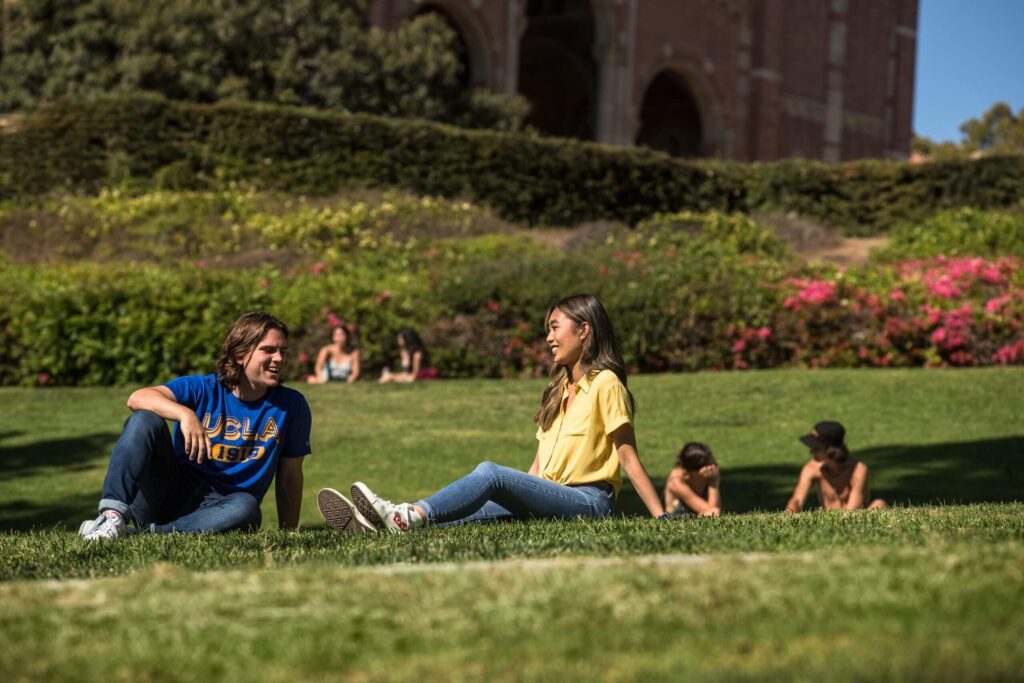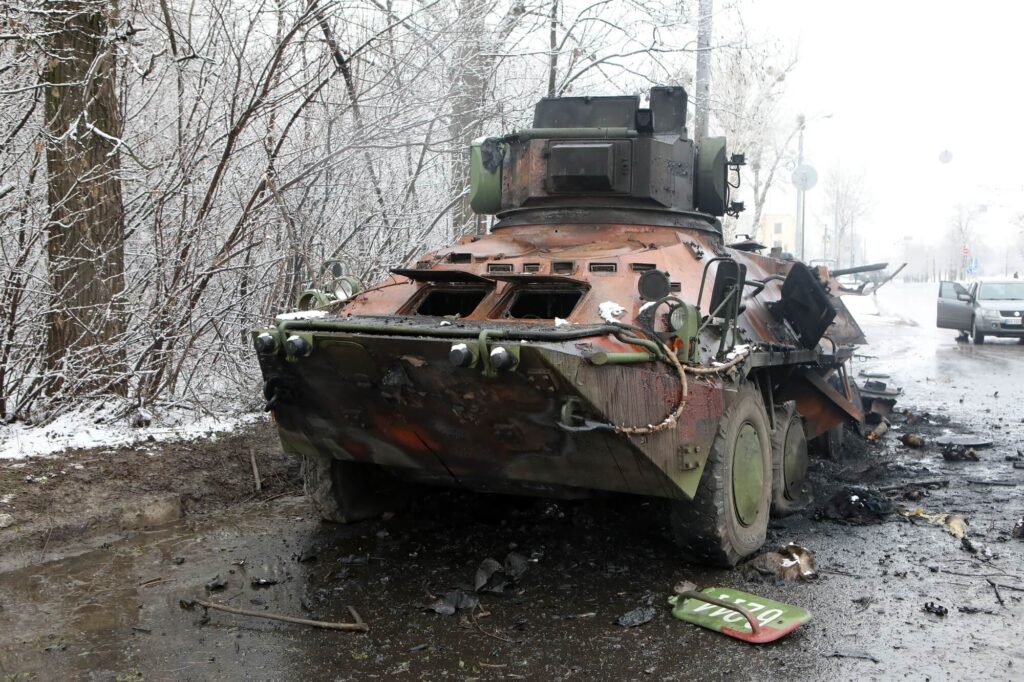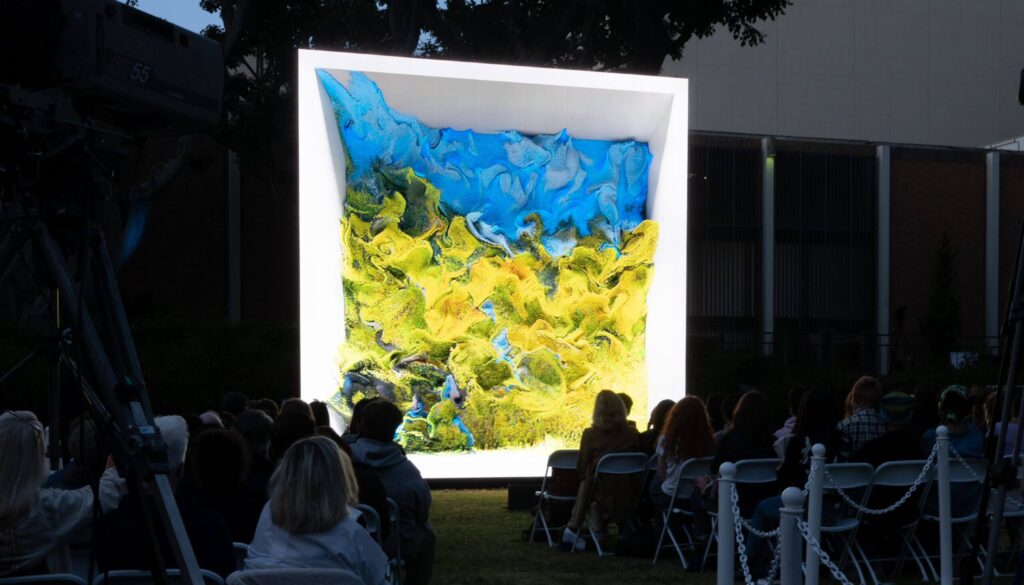
With the end of the academic year coming up, I want to wish everyone in our community the best of luck in this final stretch. In my Spring 2022 Update, I highlight a new commitment to supporting our students, some ways in which the UCLA campus is responding to the war in Ukraine, and a memorable moment of reflection and renewal we recently held in the Franklin D. Murphy Sculpture Garden.
In this issue
- Making Room: UCLA’s New Housing Guarantee
- Bruins Respond to Russia’s Invasion of Ukraine
- A Moment of Reflection and Renewal
Making Room: UCLA’s New Housing Guarantee

Starting this fall, UCLA is making a commitment that is unprecedented among the University of California’s undergraduate campuses: Four years of guaranteed housing in university-owned residences for incoming freshmen and two years for transfer students. This meets a goal that’s been in the works for more than 35 years.
The guarantee is a crucial milestone for UCLA. We know that living on or near campus makes an enormous difference not only in students’ educational experiences, but also to the vitality of our campus community.
We’re able to make this commitment because of significant investments in housing over the past decade. Several major projects have just come to fruition or will this year: In the fall, we will open Gayley Heights, a 17-story high rise, as well as the Laurel, Palo Verde and Tipuana apartments. Last fall we added 1,800 beds with the opening of the Centennial and Olympic residence halls.
In addition to allowing students to live close by, these options will help us insulate students from a challenging Los Angeles housing market. UCLA is able to charge an average of 30% below market rental rates for its housing.
I want UCLA to not only be a place of learning, but also a home — where students socialize, attend events and explore new activities as well as study. Providing housing on or near campus helps us cultivate this part of the college experience. Of course, some UCLA students will always choose to commute to UCLA or not to live in campus-owned housing, and we must be sure to serve these students and ensure they can participate in the rich life of the university, too.
The BruinHub is one way we’re doing this. Launched this past fall, it provides a dedicated space for commuter and housing-insecure students to rest, wait out traffic, store belongings and take naps in sleep pods. UCLA recently received federal funding to double the number of sleep pods in the BruinHub.
We must do everything we can to ensure all of our students — no matter their background or means — have the chance to take advantage of the experiences and opportunities UCLA offers. Our housing guarantee and BruinHub are important steps towards this goal.
Bruins Respond to Russia’s Invasion of Ukraine

This spring, the eyes of the world turned to Russia’s invasion of Ukraine — and UCLA staff and scholars were quick both to develop programs to aid those affected by the war as well as draw on our institution’s academic resources to help our extended community understand one of the most significant geopolitical conflicts of recent times.
Bruins took action in multiple ways. In the weeks leading up to the conflict, our Student Affairs division reached out to UCLA students from the region to share university resources and emergency support available to them. After the invasion, UCLA’s International Institute, through its Center for European & Russian Studies (CERS), set up an online hub highlighting initiatives from around campus and promoting resources for students and scholars impacted by the conflict. Some of these include a CERS-led fundraising effort to generate emergency stipends for UCLA students as well as an Alan D. Leve Center for Jewish Studies initiative to launch emergency Visiting Graduate Researcher Fellowships.
UCLA scholars also helped illuminate the many dimensions of the conflict for audiences near and far. In various media, UCLA political science professor Daniel Treisman shared perspectives on the political complexities at play; UCLA Anderson faculty evaluated the effect of the war on the global economy; and UCLA history faculty members David Myers, J. Arch Getty and Jared McBride traced the complicated history between Russians and Ukrainians; among others. Additionally, scholars brought their expertise to bear in lectures and other events designed to help our community understand everything from the political and economic effects of the invasion to the relevance of religion in the conflict. Other programs drew attention to Ukrainian culture, such as a musical performance sponsored by the Center for the Art of Performance. CERS and the Center for the Study of International Migration also collaborated on a program focused on the refugee crisis prompted by the invasion.
As the war continues to rage, we at UCLA hope for the safety and well-being of everyone in the region. I urge members of our community to visit the CERS website to stay up to date on how Bruins are supporting those in need and helping us make sense of the conflict.
A Moment of Reflection and Renewal

More than two years after COVID-19 threw our lives into disarray, the UCLA community came together — in person and online — at sundown on Tuesday, April 19 to pause for a campuswide moment of reflection and renewal. It was an opportunity to acknowledge the complex challenges we have recently endured as well as share our collective hope for brighter days ahead.
The event, which took place in UCLA’s Franklin D. Murphy Sculpture Garden, was livestreamed for audiences around the world and featured the unveiling of a new art installation by UCLA alumnus and renowned media artist Refik Anadol. He and his team of artists, architects, data scientists and researchers used 300 million photographs of nature — including landscapes, flowers, trees, clouds, lakes and the ocean — to create an exhibition that incorporated sounds and gorgeous, flowing, textured visuals. Light, a major theme in Anadol’s work, was used as a symbol for new beginnings.
More than 1,000 people gathered in the sculpture garden for the event. It was a very meaningful opportunity for members of the extended Bruin community to reconvene, think deeply about the past two extraordinarily tumultuous years and build hope and connection for the future.
Anadol’s installation, Machine Simulations: Nature, remained on display in the sculpture garden for several days following the event, and may have a permanent home on the UCLA campus in the future. If you were not able to attend, I strongly urge you to watch the videorecording to see the beautiful artwork and get a sense of the powerful nature of the evening.
